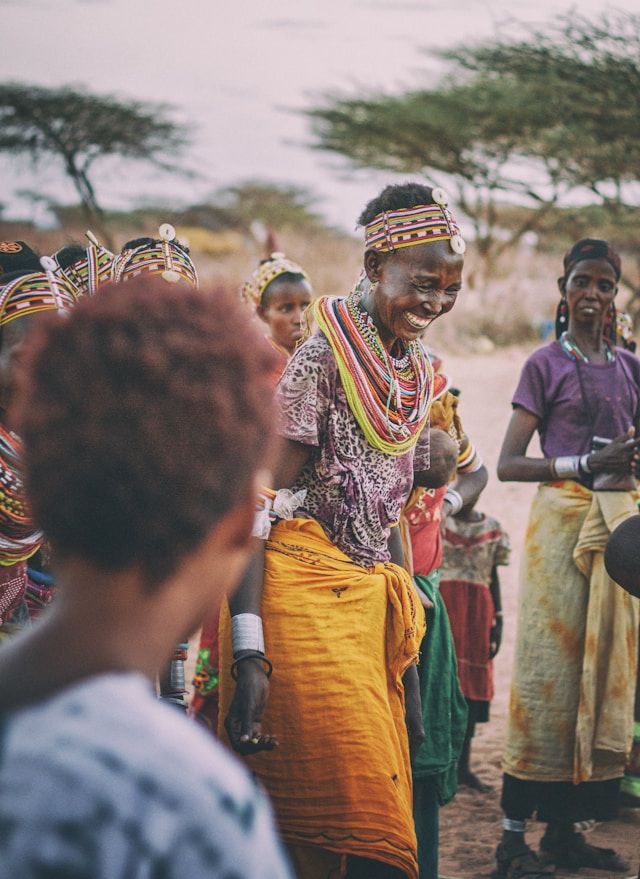Indigenous peoples are found across almost all the Partner States of the East Africa Community (EAC) and are broadly categorised into nomadic, semi-nomadic and hunter-gatherer communities.
Defining Indigenous Peoples in Africa
Defining indigenous peoples in Africa has been quite controversial since the majority of the inhabitants consider themselves indigenous to Africa. The commonly accepted definition of indigenous peoples has been criticised since it is heavily biased towards pre-colonial societies and does not capture the realities of the post-colonial era.[1] The position of the ACHPR Working Group on Indigenous Peoples is that providing a strict definition of indigenous peoples in the African context would exclude and affect certain groups.[2] Consequently, those who are considered indigenous peoples in Africa are nomadic and semi-nomadic pastoralists and hunter-gatherer communities.[3]
Challenges Faced by Indigenous Peoples
Indigenous peoples in the EAC face a myriad of challenges, including denial and non-recognition of their land rights, dispossession of their traditional lands and territories, political, social and economic marginalisation, and lack of consultation and inclusion with respect to the exploitation of natural resources on their lands. It is also common for indigenous peoples to be forced to assimilate into the way of life of other dominant groups.[4]
Legal Framework Protecting Indigenous Peoples
Indigenous peoples are protected regionally and internationally with various international instruments. The Indigenous and Tribal Peoples Convention No. 169 provides for the protection of the land and resource rights of indigenous peoples,[5] non-discrimination of indigenous peoples,[6] and obliges States to involve indigenous peoples in decisions that affect them.[7] To date, no Partner State in the EAC has ratified ILO Convention No. 169.
The United Nations Declaration on the Rights of Indigenous Peoples (UNDRIP) provides collective and individual rights that Indigenous peoples ought to enjoy, including the right to be recognised as distinct peoples,[8] the right to self-determination,[9] and the right to free, prior and informed consent,[10] None of the countries in the EAC has fully adopted the UNDRIP. The adoption of the Declaration has been sporadic at best.
The African Charter for Human and Peoples Rights recognises individual and collective rights. Rights that can be extended to indigenous peoples under the Charter include the right to be free from discrimination,[11] the right to take part in the cultural life of one’s community,[12] the right to self-determination,[13] and the right economic, social and cultural development.[14] All Partner States in the EAC have ratified the Banjul Charter.
The Treaty for the Establishment of the East African Community does not mention indigenous peoples in particular. However, the fundamental principles of the Community include social justice, equal opportunities, and recognition and protection of human and people’s rights.[15]
Partner States of the East African Community
The Democratic Republic of Congo (DRC) is the only Partner State within the EAC that has passed a law that specifically aims to protect indigenous peoples.[16] The Constitution of Burundi provides that the Twa are represented in the National Assembly and the Senate.[17] In Kenya, the Constitution recognises indigenous peoples as falling within the category of marginalised communities.[18] In Uganda, there is no explicit law that aims to protect indigenous peoples. The Constitution obliges the state to take affirmative measures to address those who have been historically disadvantaged and discriminated against.[19] Rwanda prohibits the designation of ethnicities to prevent ethnic ideology and divisionism and recognises the Twa as a historically marginalised group and not as indigenous peoples.[20] Tanzania does not have any law or policy that recognises or protects indigenous peoples.[21]
Conclusion
In the last decade, recognition of indigenous peoples has risen in Africa. Despite some Partner States including indigenous peoples in their constitutions or passing specific laws that protect indigenous peoples and their lands and territories, a widespread lack of recognition of indigenous peoples persists in the EAC. Discussions on the outcomes of these peoples in a world that is rapidly globalising continue to remain on the periphery. The lack of clearly defined laws specifically tailored to indigenous peoples makes it difficult for governments to extend specific rights normally extended to indigenous peoples or special measures to improve their standards of living. The fate of indigenous peoples in the East African Community consequently remains fragile, and Partner States are called upon to consider the plight of indigenous peoples in the respective Partner States.
[1] African Development Bank Group, ‘Development and Indigenous Peoples in Africa’, (Safeguards and Sustainability Series, 2016), vol. 2, 7.
[2] African Commission’s Working Group of Experts on Indigenous Populations/Communities, ‘Report Of The African Commission’s Working Group Of Experts On Indigenous Populations/Communities’ (ACHPR 2005) 87.
[3] Id, 102.
[4] UN Department of Public Information, ‘Indigenous Peoples in the African region: Twelfth Session of the UN Permanent Forum on Indigenous Issues’ (May 2013), <https://www.un.org/esa/socdev/unpfii/documents/2013/Media/Fact%20Sheet_Africa_%20UNPFII-12.pdf> accessed 4 March 2024.
[5] Indigenous and Tribal Peoples Convention, 1989 (No. 169), arts. 14, 15 and 16.
[6] Id, art. 2.
[7] Id, arts. 6 and 7.
[8] The United Nations Declaration on the Rights of Indigenous Peoples, art 5.
[9] Id, arts. 3 and 4.
[10] Id, arts. 10 and 19.
[11] African Charter for Human and Peoples Rights, art 2.
[12] Id, art 17.
[13] Id, art 20.
[14] Id, art. 22.
[15] Id, art. 6 (d).
[16] Loi n°22/030 Portant Protection et Promotion des Droits des Peuples Autochtones Pygmies, 2022.
[17] Constitution of Burundi, arts. 164 and 180.
[18] Constitution of Kenya 2010, art. 260.
[19] The Constitution of the Republic of Uganda, 1995, art. 32.
[20] Cultural Survival, “Observations on the State of Indigenous Human Rights in Rwanda in Light of the UN Declaration on the Rights of Indigenous Peoples Rwanda”, [2015] CSQ 3.
[21] International Work Group for Indigenous Affairs, ‘Indigenous Peoples in Tanzania’ (IWGIA , 9 May 2012) <https://www.iwgia.org/en/tanzania/897-update-2011-tanzania#:~:text=Tanzania%20voted%20in%20favour%20of,on%20indigenous%20peoples%20per%20se.> accessed on 20 March 2024.
